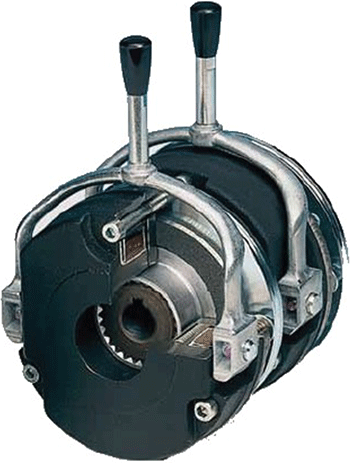
网站公告
more- Selcuklu Esc... 25-04-01 22:43
- Havalı Adana... 25-04-01 22:41
- ♀ Yeni Adana... 25-04-01 20:06
- Poyrazköy Id... 25-04-01 18:43
High-Torque Electromagnetic Braking System Design
LeePegues096703 2025.03.29 13:39 查看 : 2
A high-torque electromagnetic braking system is a system for generating braking torque that generates high-torque braking by leveraging electromagnetic forces. This braking technology is becoming increasingly popular in multiple industries due to its advanced reliability features, low maintenance requirements, and the ability to operate in a wide temperature range.
When designing a electromagnetic throttle brake, the main components involved are the electromagnetic coil, the permanent magnet, the rubbing material, and the rotor. The coil is usually constructed from condenser copper, and is encircled by the braking drum to form the em field.
The interaction between the em field and the magnet generates a force that holds the friction material in contact with the drum. As a result, the braking material grazes against the drum to create the necessary braking force. The braking force is directly proportional to the force generated by the magnetic field and the rubbing coefficient between the braking drum and the friction material.
A significant concern in designing a high-torque brake system is managing the heat generated by the em field. As the electromagnetic field is activated, it results in a substantial amount of thermal energy being transformed into heat. This heat can impact the efficiency of the braking system or become less effective with use.
To alleviate this problem, designers use advanced materials and heat dissipation systems to transfer heat away from the electromagnetic field.
A significant consideration of designing a high-torque brake system is complying with safety regulations the safety requirements of the application. This includes ensuring the system for generating braking torque can meet torque requirements, can operate safely in a temperature range, and электромагнитный тормоз принцип работы can function even after malfunctions without compromising the safety of the user scenario.
In addition to the technical requirements, the design of the system also needs to consider the cost and sturdiness of the setup. Designers must balance such as the material selection, manufacturing process, and maintenance requirements to guarantee the braking system's efficiency and cost-effectiveness.
 In summary, designing a electromagnetic throttle brake requires a thorough understanding of the underlying scientific principles and expertise in materials selection|thermal management|reliability engineering}. By carefully managing the electromagnetic field, thermal dissipation, and safety protocols, designers can build a electromagnetic throttle brake that meets the needs of the application while ensuring the safety and efficiency of the system.
In summary, designing a electromagnetic throttle brake requires a thorough understanding of the underlying scientific principles and expertise in materials selection|thermal management|reliability engineering}. By carefully managing the electromagnetic field, thermal dissipation, and safety protocols, designers can build a electromagnetic throttle brake that meets the needs of the application while ensuring the safety and efficiency of the system.
When designing a electromagnetic throttle brake, the main components involved are the electromagnetic coil, the permanent magnet, the rubbing material, and the rotor. The coil is usually constructed from condenser copper, and is encircled by the braking drum to form the em field.
The interaction between the em field and the magnet generates a force that holds the friction material in contact with the drum. As a result, the braking material grazes against the drum to create the necessary braking force. The braking force is directly proportional to the force generated by the magnetic field and the rubbing coefficient between the braking drum and the friction material.
A significant concern in designing a high-torque brake system is managing the heat generated by the em field. As the electromagnetic field is activated, it results in a substantial amount of thermal energy being transformed into heat. This heat can impact the efficiency of the braking system or become less effective with use.
To alleviate this problem, designers use advanced materials and heat dissipation systems to transfer heat away from the electromagnetic field.
A significant consideration of designing a high-torque brake system is complying with safety regulations the safety requirements of the application. This includes ensuring the system for generating braking torque can meet torque requirements, can operate safely in a temperature range, and электромагнитный тормоз принцип работы can function even after malfunctions without compromising the safety of the user scenario.
In addition to the technical requirements, the design of the system also needs to consider the cost and sturdiness of the setup. Designers must balance such as the material selection, manufacturing process, and maintenance requirements to guarantee the braking system's efficiency and cost-effectiveness.
 In summary, designing a electromagnetic throttle brake requires a thorough understanding of the underlying scientific principles and expertise in materials selection|thermal management|reliability engineering}. By carefully managing the electromagnetic field, thermal dissipation, and safety protocols, designers can build a electromagnetic throttle brake that meets the needs of the application while ensuring the safety and efficiency of the system.
In summary, designing a electromagnetic throttle brake requires a thorough understanding of the underlying scientific principles and expertise in materials selection|thermal management|reliability engineering}. By carefully managing the electromagnetic field, thermal dissipation, and safety protocols, designers can build a electromagnetic throttle brake that meets the needs of the application while ensuring the safety and efficiency of the system.?? 0
Copyright © youlimart.com All Rights Reserved.鲁ICP备18045292号-2 鲁公网安备 37021402000770号

